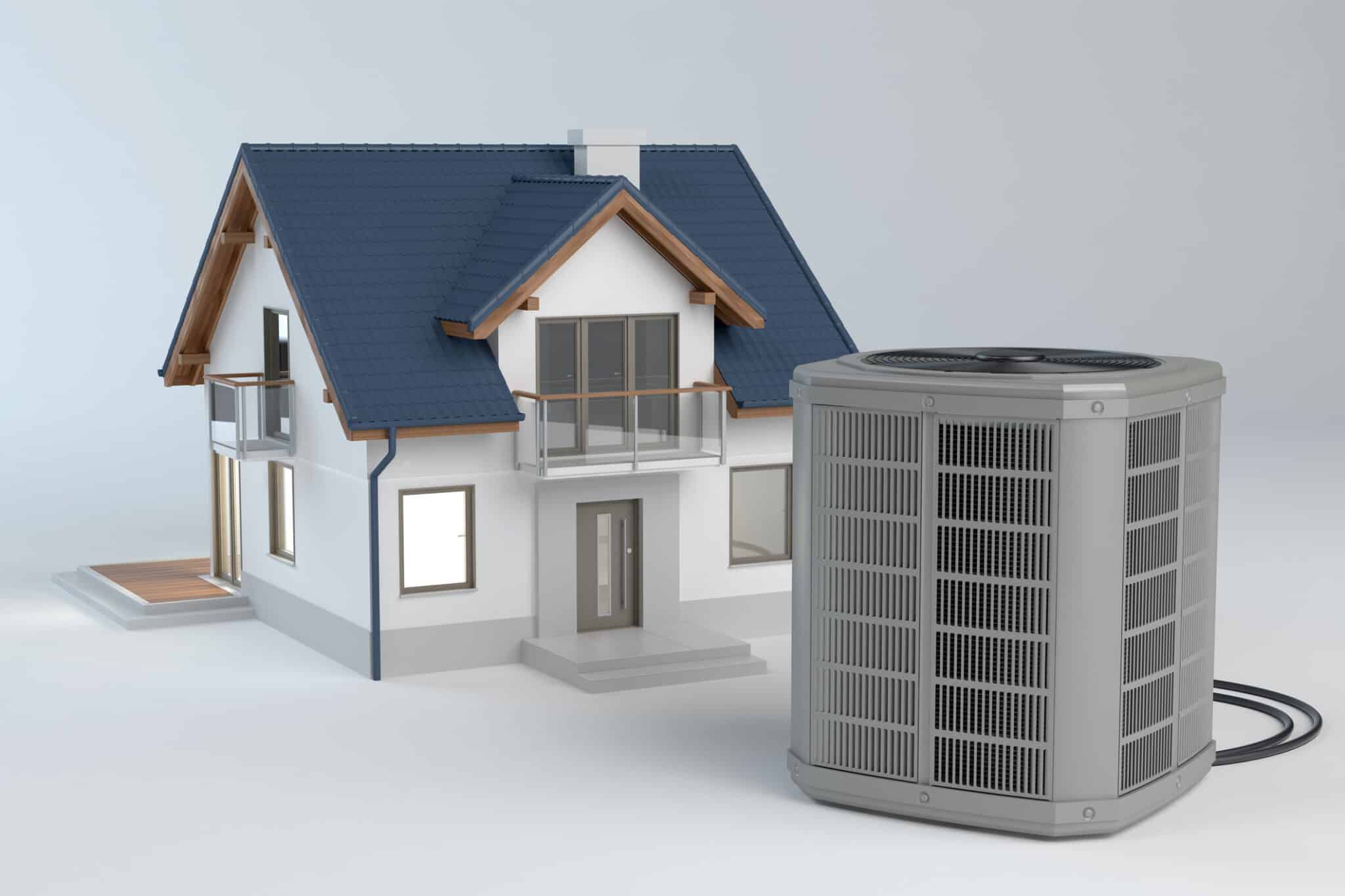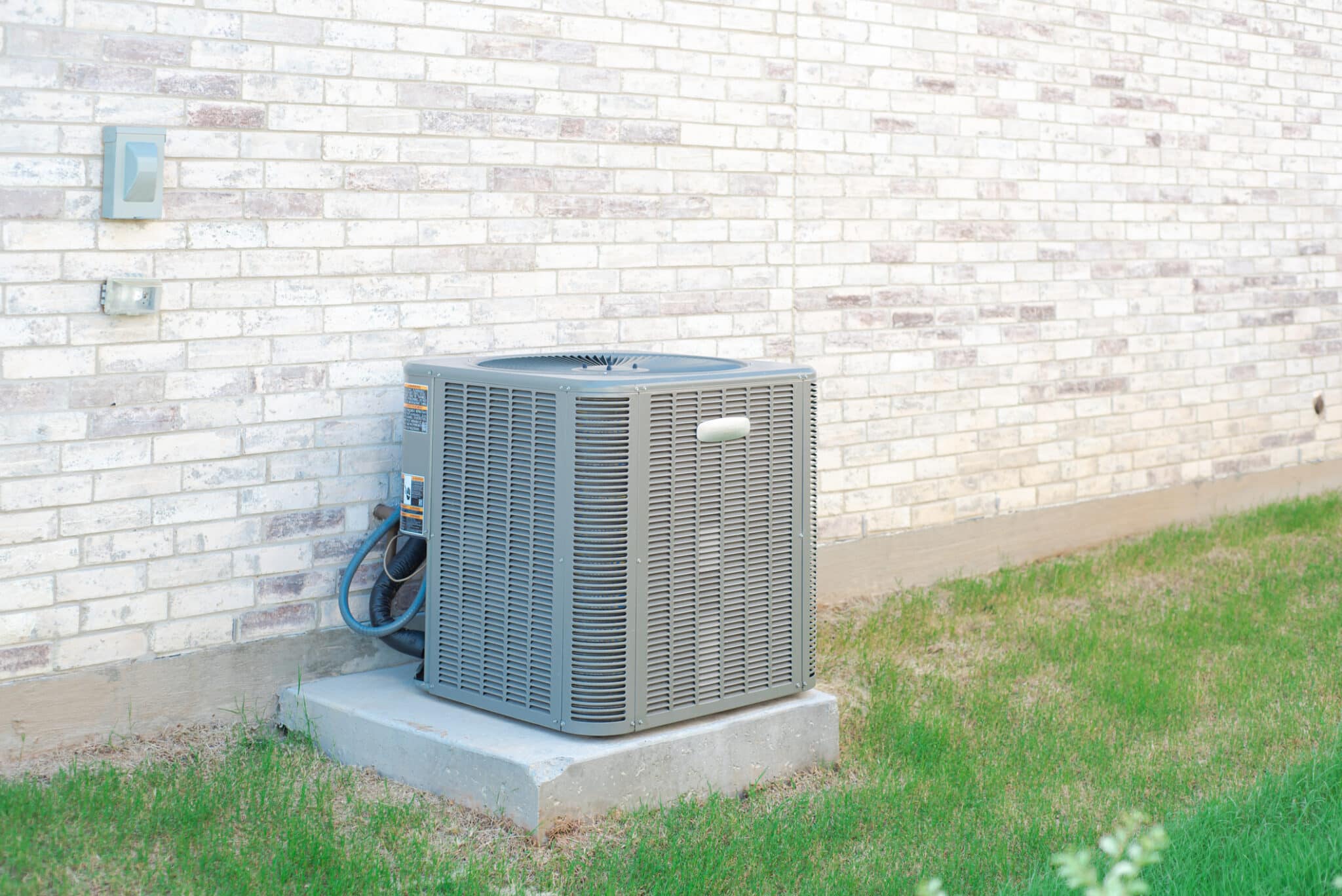Achieving optimal comfort in your home starts with the right residential HVAC design. This crucial aspect of home comfort ensures your living spaces in Springtown, TX, and beyond maintain consistent temperatures year-round. It’s not just about installing any heating and cooling system; it’s about finding the right fit for your unique space. By focusing on tailored solutions, homeowners can enjoy enhanced comfort and efficiency.
In places like Briar, TX, where the weather can vary dramatically, the importance of a well-thought-out residential HVAC design cannot be overstated. A system that’s too large or too small for your home won’t just affect your comfort; it can also impact your energy bills. The key is to strike the perfect balance, ensuring your system works efficiently without overextending itself. This balance is achievable through careful planning and professional insight.
Professional HVAC services specialize in creating designs that cater specifically to the needs of your home. They consider various factors, including the size of your house, its layout, and even the local climate. This attention to detail ensures that every corner of your home, whether in Springtown, TX, or Briar, TX, receives adequate heating and cooling. As a result, residents can enjoy a comfortable indoor environment regardless of the season.
Embracing the right residential HVAC design is about more than just immediate comfort. It’s an investment in your home’s future, promising reduced energy consumption and longer-lasting HVAC systems. With the expertise of professionals, achieving an optimal home environment becomes a seamless process. Thus, understanding and implementing the principles of residential HVAC design is a step towards a more comfortable, efficient, and enjoyable home.
The Basics of Residential HVAC Design
Understanding the basics of residential HVAC design starts with recognizing the role of load calculations. These calculations help determine the right size of the HVAC system for your home. By considering factors like square footage, window orientation, and insulation levels, professionals ensure your system is neither too big nor too small. This precision avoids unnecessary energy use and maximizes comfort in your Springtown, TX home.
Another fundamental aspect involves selecting the right type of HVAC system. Options range from traditional central air systems to ductless mini-splits. Each has its advantages and suitability depending on your home’s layout and specific needs. Making the right choice ensures efficient heating and cooling, keeping every room in your Briar, TX home comfortable throughout the year.
Proper ductwork design also plays a crucial role in residential HVAC efficiency. Ideally, ducts should be sealed and insulated to prevent air leaks and ensure even air distribution. This attention to detail helps maintain consistent temperatures in all areas of your home. It also contributes to the overall efficiency of your HVAC system, making your living spaces more enjoyable.
Lastly, considering the climate in your area is essential for optimizing your HVAC design. In regions with extreme weather conditions, systems with higher efficiency ratings may be more appropriate. These systems can handle the demands of harsh summers and cold winters, providing reliable comfort. By incorporating these basics of residential HVAC design, homeowners in Springtown, TX, and beyond can achieve an ideal indoor environment.

Understanding Your Home’s Heating and Cooling Needs
Understanding your home’s heating and cooling needs is pivotal in achieving a comfortable and energy-efficient living space. To begin, assess your home’s specific requirements by considering its size, layout, and the number of occupants. These elements play a significant role in determining the capacity and type of HVAC system that will best serve your residence. This approach ensures that your system is tailored to provide optimal comfort without excessive energy consumption.
Next, take into account the insulation quality and the presence of any drafts or air leaks in your home. Proper insulation and sealing of leaks are essential for maintaining desired temperatures and preventing your HVAC system from overworking. This not only helps in keeping your Springtown, TX home comfortable but also contributes to the longevity and efficiency of your HVAC system. Addressing these issues can significantly enhance your home’s heating and cooling effectiveness.
Additionally, consider the impact of external factors such as sunlight exposure and shading on your home’s temperature. Homes in Briar, TX, for example, might experience intense heat due to direct sunlight, requiring a different approach to HVAC design. By understanding these external influences, you can better plan for supplemental cooling or heating solutions, ensuring your HVAC system can maintain a consistent and comfortable indoor environment.
Lastly, it’s important to regularly evaluate your HVAC system’s performance and adapt to any changes in your living situation. Whether it’s a room addition or a change in occupancy, your heating and cooling needs may evolve over time. By staying attuned to these changes and adjusting your residential HVAC design accordingly, you can ensure your home remains a haven of comfort and efficiency throughout the year.
Key Components of an Efficient HVAC System
When discussing residential HVAC design, the efficiency of the system is paramount. A key component is the HVAC unit’s Seasonal Energy Efficiency Ratio (SEER) rating. This rating measures the cooling output during a typical cooling season divided by the total electric energy input. Choosing a unit with a high SEER rating ensures your home in Springtown, TX, remains cool and comfortable more efficiently.
Another crucial aspect is the Heating Seasonal Performance Factor (HSPF) for heat pumps. This factor gauges the heating efficiency of heat pumps over a heating season. A higher HSPF rating indicates a more efficient heat pump, reducing the energy needed to warm your home during the chilly months in Briar, TX. This efficiency not only keeps your home cozy but also supports a greener environment.
Furthermore, the design and installation of the HVAC system play a significant role in its efficiency. Properly sized and strategically placed vents ensure even air distribution throughout your home. This eliminates hot or cold spots, providing a uniform temperature in every room. It’s essential to work with professionals who understand the unique layout of your home to achieve this balance.
Lastly, regular maintenance of your HVAC system cannot be overlooked. Routine checks and cleanings prevent minor issues from becoming major problems, ensuring your system runs at peak efficiency. This includes changing filters, cleaning ducts, and checking for leaks. Residents in Springtown, TX, and Briar, TX, benefit greatly from adhering to a maintenance schedule, enjoying optimal home comfort year-round.
The Role of Insulation in Residential HVAC Design
Understanding the significance of insulation in residential HVAC design is essential for maintaining a comfortable home environment. Proper insulation acts as a barrier, preventing heat from entering or escaping your home, which in turn, makes your heating and cooling system work more efficiently. This efficiency is crucial for homes in Briar, TX, where temperatures can fluctuate dramatically. By ensuring your home is well-insulated, you can enjoy a consistent indoor temperature without overburdening your HVAC system.
In addition to walls and attics, paying attention to windows and doors is also important in residential HVAC design. Drafty windows and doors can undermine your HVAC system’s efficiency by allowing conditioned air to escape. Sealing these leaks with weather stripping or replacing them with energy-efficient models can significantly improve your home’s insulation. This simple step can make a big difference in how comfortable your home feels, especially during the extreme seasons experienced in Springtown, TX.
Another aspect to consider is the type of insulation material used in your home. Different materials offer varying levels of thermal resistance, known as R-values. Choosing the right insulation material for your home’s specific needs can enhance your HVAC system’s performance. This choice ensures that whether you’re cooling your home in the summer or heating it in the winter, your system operates at its best, providing optimal comfort with less energy.
Finally, regular assessments of your home’s insulation can reveal areas that need improvement or updating. Over time, insulation can settle or become damaged, reducing its effectiveness. By identifying and addressing these issues, homeowners can maintain an efficient residential HVAC design. This proactive approach not only keeps your home comfortable but also supports the longevity and performance of your HVAC system, ensuring it meets your heating and cooling needs year-round.
Selecting the Right HVAC Equipment for Your Home
Selecting the right HVAC equipment is a cornerstone of effective residential HVAC design, ensuring your home in Springtown, TX, achieves the desired comfort level. The process begins by evaluating the specific needs of your residence, including the square footage and layout. This initial step is crucial as it informs the type of system that will best suit your home, whether it’s a traditional central unit or a more modern ductless mini-split system. By tailoring the equipment to your home’s characteristics, optimal heating and cooling efficiency is achievable.
In Briar, TX, where temperatures can swing widely, choosing HVAC equipment with the right capacity is essential. An oversized unit can lead to unnecessary energy consumption and uneven temperature control, while an undersized system may struggle to maintain comfort during extreme weather. Professionals in residential HVAC design excel at matching your home with a system that operates efficiently across all seasons. This precision ensures that your living space remains comfortable year-round, without overburdening the HVAC system.
The selection of HVAC equipment also involves considering the system’s energy efficiency ratings, such as SEER for cooling and HSPF for heating. High-efficiency units can significantly reduce energy usage, making them a smart choice for environmentally conscious homeowners. In addition, these systems are designed to provide superior comfort by maintaining consistent indoor temperatures and humidity levels. By focusing on energy efficiency, homeowners can enjoy a comfortable, sustainable living environment.
Finally, integrating advanced features and controls into your residential HVAC design enhances comfort and convenience. Modern systems offer programmable thermostats and smart home compatibility, allowing for precise control over your home’s climate. These technologies enable homeowners to customize their heating and cooling settings, adapting to changes in weather or personal preference with ease. With the right equipment and features in place, achieving and maintaining an ideal home environment becomes a straightforward and satisfying experience.
Zoning Systems: Enhancing Comfort and Efficiency
Implementing zoning systems in residential HVAC design significantly enhances comfort and efficiency in homes. These systems allow different areas of a home to be heated or cooled independently, addressing the unique needs of each space. For instance, a sunlit room in Springtown, TX, might require more cooling during the day than a shaded room. Zoning systems provide the flexibility to maintain optimal temperatures throughout the house without wasting energy on unoccupied spaces.
The integration of zoning systems into residential HVAC design offers a tailored approach to climate control. By dividing a home into zones, residents can customize temperature settings according to personal preferences and the specific use of each area. This customization ensures that everyone in a Briar, TX home enjoys their ideal comfort level, enhancing the overall living experience. It also contributes to a more efficient operation of the HVAC system, as energy is not expended on heating or cooling areas that don’t require it.
Moreover, zoning systems contribute to the longevity of HVAC equipment by reducing the wear and tear associated with running a system at full capacity continuously. When areas of a home are not in use, the system can adjust accordingly, operating at a lower intensity. This not only prolongs the life of the HVAC system but also supports a more sustainable approach to residential heating and cooling. Residents can enjoy a comfortable home environment knowing they are also making an environmentally conscious choice.
Finally, the implementation of zoning systems aligns perfectly with the principles of modern residential HVAC design, prioritizing efficiency and personalized comfort. Homeowners can control the climate of their home with precision, ensuring that every room is just the right temperature. Whether dealing with the hot summers typical to Springtown, TX, or the cooler nights in Briar, TX, zoning systems provide an effective solution to meet diverse heating and cooling needs. This advanced approach to residential climate control represents a significant step forward in creating more comfortable, efficient homes.
Incorporating Smart Thermostats into HVAC Design
Incorporating smart thermostats into residential HVAC design brings a new level of convenience and efficiency to homeowners in Springtown, TX. These devices allow for precise temperature control from anywhere, using a smartphone or tablet. This means you can adjust your home’s climate before you arrive, ensuring optimal comfort. Additionally, smart thermostats learn your preferences over time, automatically adjusting to save energy without sacrificing comfort.
Smart thermostats also play a crucial role in enhancing the overall performance of your residential HVAC system. By monitoring your heating and cooling patterns, these devices can identify opportunities to improve energy use. For instance, they can reduce cooling in Briar, TX homes when no one is present, cutting down on unnecessary energy consumption. This not only makes your HVAC system more efficient but also supports a healthier environment.
Another benefit of integrating smart thermostats into your HVAC design is the ability to track and analyze your energy usage. This feature provides valuable insights into how your home consumes energy, highlighting areas where you can cut costs. It can also alert you to potential issues with your HVAC system, allowing for prompt maintenance. This proactive approach ensures your system remains in top condition, extending its lifespan.
Finally, smart thermostats contribute to a more personalized home environment. They can be programmed to adjust temperatures according to the specific needs of different rooms. Whether it’s keeping the bedroom cool at night in Springtown, TX, or warming the living room in the morning in Briar, TX, these devices ensure every space is always just right. With smart thermostats, achieving a comfortable and efficient home through thoughtful residential HVAC design has never been easier.
Maintenance Tips for Optimal HVAC Performance
Regular maintenance is key to ensuring your residential HVAC design continues to operate efficiently and effectively. By scheduling routine inspections, homeowners in Springtown, TX, can prevent minor issues from escalating into major problems. These check-ups often include cleaning filters, checking for duct leaks, and ensuring the system’s components are in good working order. This proactive approach not only maintains optimal performance but also extends the lifespan of your HVAC system.
Changing air filters regularly is another essential maintenance tip that can significantly impact the efficiency of your HVAC system. A clogged or dirty filter restricts airflow, forcing the system to work harder, which can lead to increased energy usage and decreased comfort levels. Homeowners in Briar, TX, will find that replacing air filters every few months can improve air quality and system efficiency. This simple step is a crucial component of a well-maintained residential HVAC design.
Ensuring your home’s ductwork is properly sealed and insulated is also vital for maintaining an efficient HVAC system. Leaky ducts can result in lost air and uneven heating or cooling, undermining the effectiveness of your residential HVAC design. By having a professional assess and repair any ductwork issues, you can ensure that your system distributes air as intended. This not only enhances comfort but also contributes to energy savings.
Lastly, incorporating regular thermostat checks can help homeowners optimize their HVAC system’s performance. Checking the accuracy of your thermostat ensures that your HVAC system responds correctly to your desired settings. This is especially important for residents in Springtown, TX, and Briar, TX, where seasonal temperature changes demand precise climate control. By following these maintenance tips, homeowners can enjoy the benefits of a well-functioning residential HVAC design, ensuring their home remains a comfortable sanctuary year-round.

Frequently Asked Questions
What is Residential HVAC Design?
Residential HVAC design focuses on creating systems for heating, ventilation, and air conditioning in homes. It ensures comfortable living spaces by maintaining consistent temperatures. Proper design balances energy efficiency with performance, leading to optimal indoor air quality. This process involves careful planning and installation by professionals to meet a home’s specific needs.
How to choose the right HVAC system?
Choosing the right HVAC system requires understanding your home’s specific needs. Consider the size of your space and climate conditions to ensure efficiency. A professional in residential HVAC design can help select a system that fits perfectly. They assess your home’s layout to recommend the best solution for comfort and energy use.
What are common HVAC design mistakes?
Common HVAC design mistakes include overlooking the size of the system needed for a home. An oversized or undersized unit can lead to inefficiency and discomfort. Ignoring the home’s layout can also result in uneven heating and cooling. Lastly, not considering the ductwork’s condition can impact overall system performance.
How does Residential HVAC Design improve air quality?
Residential HVAC design plays a crucial role in enhancing indoor air quality. By integrating proper ventilation strategies, it ensures a continuous flow of fresh air, reducing pollutants and allergens. Advanced filtration systems in well-designed HVAC units capture dust and microorganisms, keeping the air clean. Thus, a thoughtfully planned HVAC system contributes significantly to a healthier living environment.
What factors affect HVAC efficiency?
Several factors influence HVAC efficiency in a home. Proper insulation keeps conditioned air inside, reducing the system’s workload. The size of the unit matters too; too large or small can decrease efficiency. Regular maintenance ensures the system operates at peak performance. Lastly, the design and condition of ductwork play a critical role in maintaining consistent airflow and temperature.








